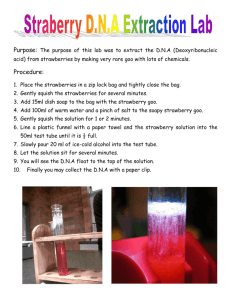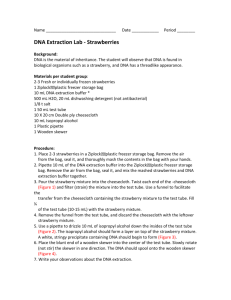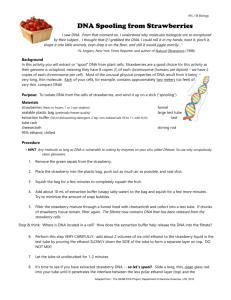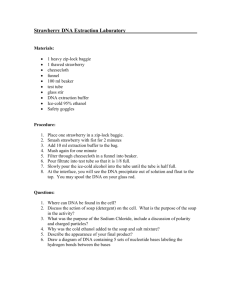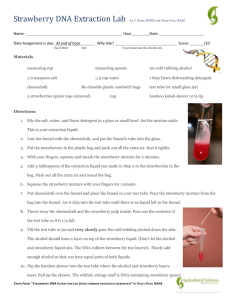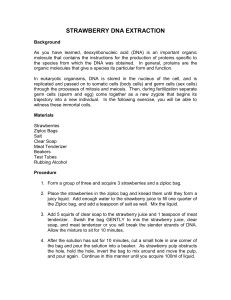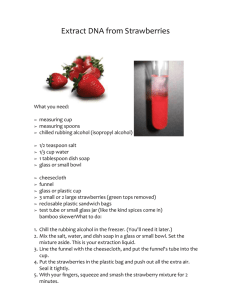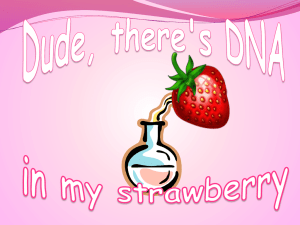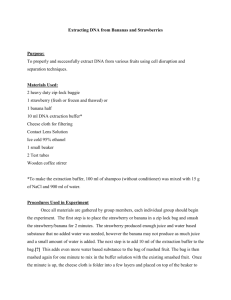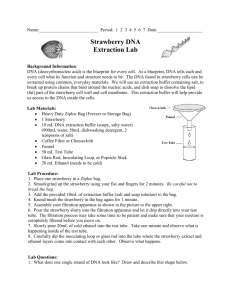Strawberry DNA Spooling Lab
advertisement
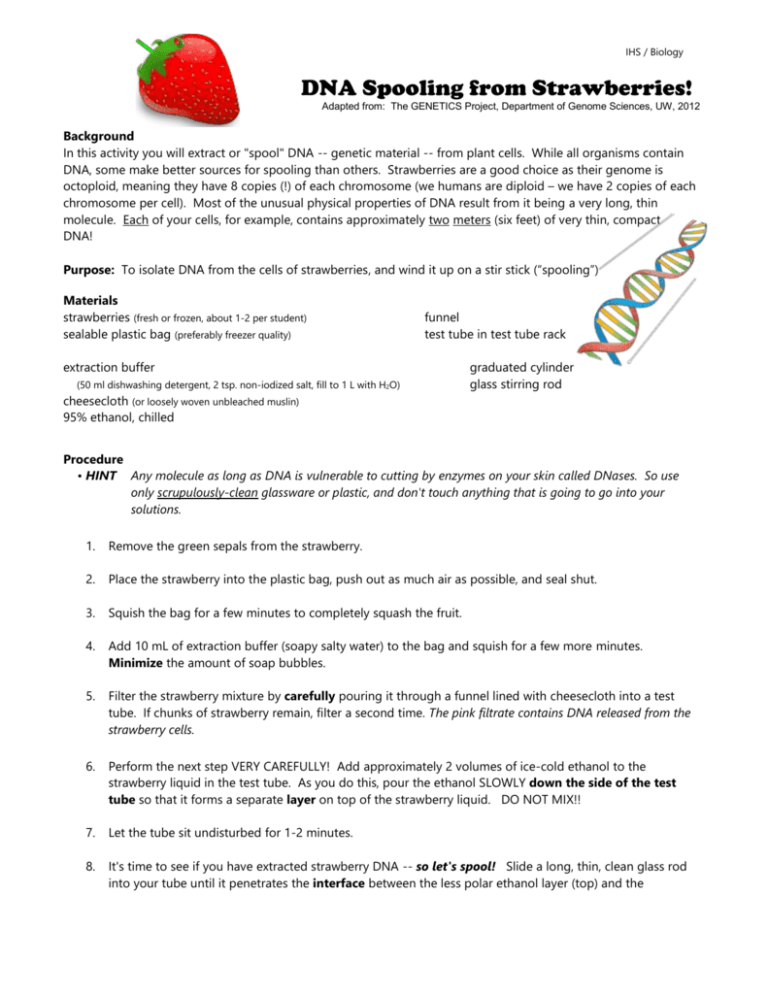
IHS / Biology DNA Spooling from Strawberries! Adapted from: The GENETICS Project, Department of Genome Sciences, UW, 2012 Background In this activity you will extract or "spool" DNA -- genetic material -- from plant cells. While all organisms contain DNA, some make better sources for spooling than others. Strawberries are a good choice as their genome is octoploid, meaning they have 8 copies (!) of each chromosome (we humans are diploid – we have 2 copies of each chromosome per cell). Most of the unusual physical properties of DNA result from it being a very long, thin molecule. Each of your cells, for example, contains approximately two meters (six feet) of very thin, compact DNA! Purpose: To isolate DNA from the cells of strawberries, and wind it up on a stir stick (“spooling”) Materials strawberries (fresh or frozen, about 1-2 per student) sealable plastic bag (preferably freezer quality) funnel test tube in test tube rack extraction buffer (50 ml dishwashing detergent, 2 tsp. non-iodized salt, fill to 1 L with H2O) graduated cylinder glass stirring rod cheesecloth (or loosely woven unbleached muslin) 95% ethanol, chilled Procedure • HINT Any molecule as long as DNA is vulnerable to cutting by enzymes on your skin called DNases. So use only scrupulously-clean glassware or plastic, and don't touch anything that is going to go into your solutions. 1. Remove the green sepals from the strawberry. 2. Place the strawberry into the plastic bag, push out as much air as possible, and seal shut. 3. Squish the bag for a few minutes to completely squash the fruit. 4. Add 10 mL of extraction buffer (soapy salty water) to the bag and squish for a few more minutes. Minimize the amount of soap bubbles. 5. Filter the strawberry mixture by carefully pouring it through a funnel lined with cheesecloth into a test tube. If chunks of strawberry remain, filter a second time. The pink filtrate contains DNA released from the strawberry cells. 6. Perform the next step VERY CAREFULLY! Add approximately 2 volumes of ice-cold ethanol to the strawberry liquid in the test tube. As you do this, pour the ethanol SLOWLY down the side of the test tube so that it forms a separate layer on top of the strawberry liquid. DO NOT MIX!! 7. Let the tube sit undisturbed for 1-2 minutes. 8. It's time to see if you have extracted strawberry DNA -- so let's spool! Slide a long, thin, clean glass rod into your tube until it penetrates the interface between the less polar ethanol layer (top) and the IHS / Biology hydrophilic pink layer (bottom). Then, begin making a circular, stirring motion with it, as if you’re stirring a witch’s brew! 9. If you are successful, long threads of DNA will precipitate onto the glass rod! "Reel in" a good-sized clump of fibers! These are not single DNA molecules, but huge ropes of thousands of molecules twisted together. 10. If you’d like to save your strawberry’s DNA, ask your teacher how to do so! Upon completion of this activity: • Dispose of the used baggie and cheesecloth into the trash. Pour the liquid down the sink. • Leave equipment as you found it, and check that your work station is in order. • Wash your hands.
